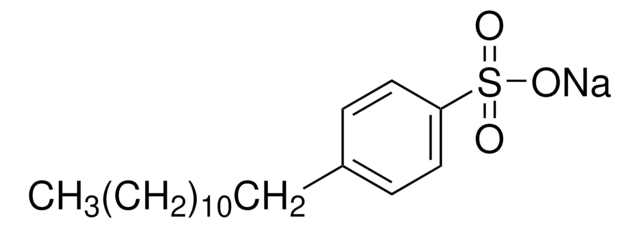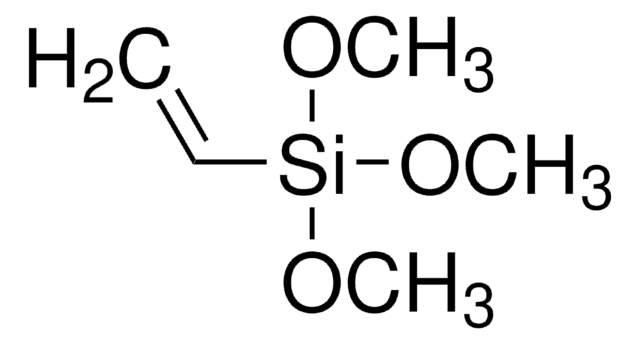436143
Sodium dodecyl sulfate
ACS reagent, ≥99.0%
동의어(들):
Dodecyl sodium sulfate, Dodecyl sulfate sodium salt, Lauryl sulfate sodium salt, SDS, Sodium lauryl sulfate
About This Item
추천 제품
Grade
ACS reagent
Quality Level
설명
anionic
62
분석
≥99.0%
양식
solid
분자량
288.38 g/mol
불순물
≤0.06 meq/g Titr. Base
≥96.0% fatty alcohols
<4.0% unsulfated alcohols
손실
≤1.0% loss on drying
mp
204-207 °C (lit.)
solubility
H2O: soluble 1 gm in 10 ml (opalescent solution)
양이온 미량물
heavy metals (as Pb): ≤0.002%
λ
3 %H2O reference
UV 흡수
λ: 220-350 nm Amax: ≤0.1
HLB
40
SMILES string
[Na+].CCCCCCCCCCCCOS([O-])(=O)=O
InChI
1S/C12H26O4S.Na/c1-2-3-4-5-6-7-8-9-10-11-12-16-17(13,14)15;/h2-12H2,1H3,(H,13,14,15);/q;+1/p-1
InChI key
DBMJMQXJHONAFJ-UHFFFAOYSA-M
유사한 제품을 찾으십니까? 방문 제품 비교 안내
일반 설명
In protein biochemistry, SDS plays a pivotal role in protein extraction and SDS-PAGE (sodium dodecyl sulfate-polyacrylamide gel electrophoresis). Its ability to denature proteins by disrupting their secondary and tertiary structures allows for their uniform migration through a polyacrylamide gel matrix based on their molecular weight. This technique, SDS-PAGE, has become an indispensable tool for analyzing protein size and purity.
Beyond protein analysis, SDS also finds applications in nucleic acid extraction and hybridization techniques. Its detergent properties aid in the lysis of cells and the solubilization of cellular components, facilitating the extraction of DNA and RNA. This makes SDS a valuable reagent in various molecular biology protocols, including PCR (polymerase chain reaction) and Southern blotting. Sodium dodecyl sulfate stands as a versatile and widely used surfactant with a diverse range of applications due to its ability to solubilize, denature, and separate biological molecules for cell biology and biochemical research.
애플리케이션
생화학적/생리학적 작용
특징 및 장점
- Highly versatile surfactant for your molecular biology and biochemical research
- Tested to confirm low levels of heavy metal contamination, ensuring suitability for various applications
기타 정보
호환 제품
신호어
Danger
유해 및 위험 성명서
Hazard Classifications
Acute Tox. 4 Inhalation - Acute Tox. 4 Oral - Aquatic Chronic 3 - Eye Dam. 1 - Flam. Sol. 2 - Skin Irrit. 2 - STOT SE 3
표적 기관
Respiratory system
Storage Class Code
4.1B - Flammable solid hazardous materials
WGK
WGK 2
Flash Point (°F)
338.0 °F
Flash Point (°C)
170 °C
개인 보호 장비
Eyeshields, Faceshields, Gloves, type P3 (EN 143) respirator cartridges
이미 열람한 고객
프로토콜
Single-Walled Carbon Nanotubes: Exfoliation and Debundling Procedure
자사의 과학자팀은 생명 과학, 재료 과학, 화학 합성, 크로마토그래피, 분석 및 기타 많은 영역을 포함한 모든 과학 분야에 경험이 있습니다..
고객지원팀으로 연락바랍니다.





